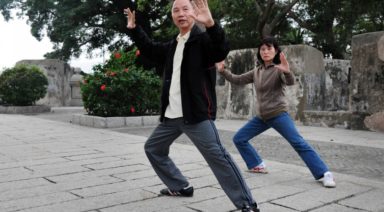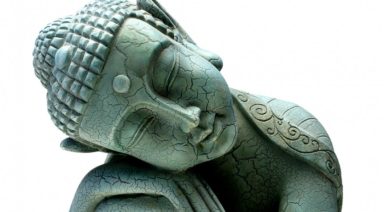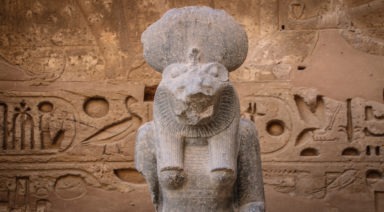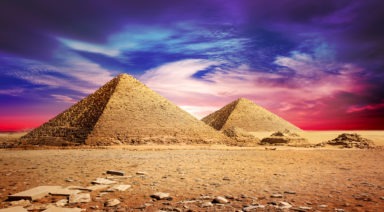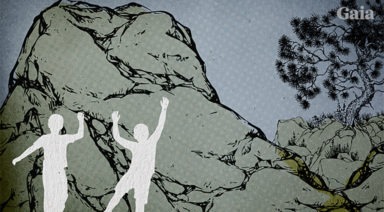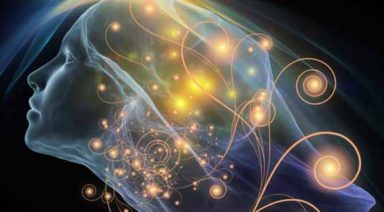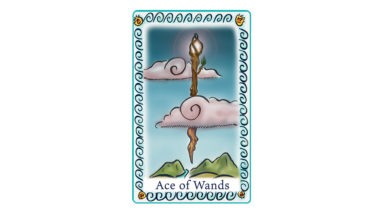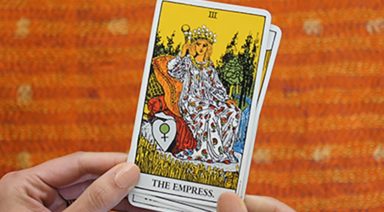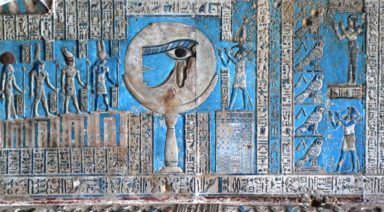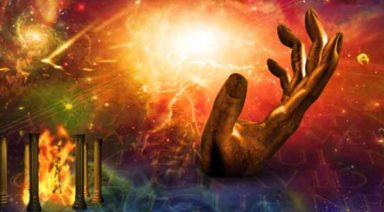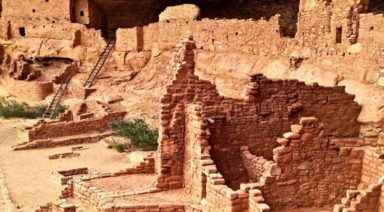What is the Meaning of Lokah Samastah Sukhino Bhavantu

In times of great change and global uncertainty, we are sometimes at a loss to find stability and peace within. Yet, we are supported endlessly by the wisdom of the ages. Lokah Samastah Sukhino Bhavantu is a mantra of power that assists us in our spiritual evolution and acts as a blessing for the world.
Lokah Samastah Sukhino Bhavantu or लोका: समस्ता: सुखिनो भवन्तु is a Sanskrit mantra which means:
“May all beings everywhere be happy and free, and may the thoughts, words, and actions of my own life contribute in some way to that happiness and to that freedom for all.”
By chanting this peace mantra, we move from our personal selves and radiate a prayer of love for the world around us. It takes us from the egoic, little self and its limited worldview and radiates a powerful warmth. It is a reminder we are a part of the universe and can positively impact all of creation.
Though not a traditional Vedic mantra, Lokah Samastah Sukhino Bhavantu is a Sanskrit prayer (or sloka). It has been used for many centuries to invoke greater states of compassion and peace. Often said at the end of yoga practices, it’s an invocation for personal and collective peace. “Do unto others as you would have them do unto you” may be the closest Western equivalent. Yet, the impact of this ancient mantra is far grander than simple human kindness.
Want to learn more about Sanskrit Mantras? Watch this full-length episode free!
Sanskrit Word: The Language of the Ancients
Sanskrit dates back 7000-8000 years. Used before language and the written word, its sounds are not simply phonetic but rather carry within them the very sounds of creation. The sounds are onomatopoeic and transmit the raw power of the universe.
This vibrational legacy was once reserved for initiates alone. The revered Brahmins make the path of spiritual study their life’s work. They commit to their own self-realization and act as mighty carriers of the ancient paths of power. As the potency of the mantra became more far-reaching, it is now a vital component of those devoted to enlightenment in all forms.
One need not be a yogi to partake in this ancient practice. Instead, our sincere intent grants us the right to utter these syllables of creation.
Mantras
Lokah Samastah Sukhino Bhavantu is not found in the Vedas, which are ancient sacred texts of Hinduism originating from the Indian subcontinent (India, Pakistan, Bangladesh, Sri Lanka, Nepal, and Bhutan). The Vedas are among the oldest literary compositions in the world and consist of four collections: the Rigveda, Samaveda, Yajurveda, and Atharvaveda. They primarily contain mantras, rituals, and philosophical teachings dating back thousands of years. While the mantra Lokah Samastah Sukhino Bhavantu is not directly from the Vedas, it reflects the broader spiritual and philosophical traditions of Hinduism.
But what is a mantra? The combination of sounds directs the forces of creation. The currents transmute the limitations of linguistics and become tools for power. Tricia McCannon, in the Return of the Divine Sophia, claims that “the three purest aspects of God are love, sound, and light.” Mantras create a pathway to achieve all three, making the sounds we vibrate with love to hold more light!
The beauty of using a mantra is that it has no meaning for our literal mind. It surpasses the logic and our need for meaning. This vibration transmits greater vitality, for it is meaningless to the functions of the intellect.
Mantras speak to the universe, our cells, and souls directly. The sound itself reverberates through our body, acting as nourishment for the soul. As it vibrates within, the mantra emanates and blesses outside of us to affect the subtle fields of energy in the universe.
The Meaning of Lokah Samastah Sukhino Bhavantu
Popularized by Jivamukti Yoga, the complete translation of the mantra states:
- Lokah: location, realm, all universes existing now
- Samastah: all beings sharing that same location
- Sukhino: centered in happiness and joy, free from suffering
- Bhav: the divine mood or state of unified existence
- Antu: may it be so, it must be so (antu used as an ending here transforms this mantra into a powerful pledge)
Viewed from this expanded translation, the impacts of the mantra have fuller breadth.
We Are All One
Inherent in the mantra is that we are all beings sharing the same planet, and we must care equally for other inhabitants. The sound of Samastah expands us beyond just the clan or tribe mentality and reminds us we are interconnected to all. It further offers a blessing that the illusions of separation dissolve.
As conscious beings, we acknowledge all life carries a seed of the divine. If we see ourselves as a spark of God, we must accept and inspire that light in others.
We all share the same life experiences of pain and pleasure, loss and enlightenment, love and doubt. We can see the woes of mankind are all shared, independent of time or location. Chants bring us from the isolation of self and into the unified field of all life.
“No human being who has walked this planet was or is different from others.” – Paulo Coehlo, Brida
Even the English translation, “May all beings be happy and free,” elevates our awareness to more conscious thought. We do not wish only for ourselves but recognize we are part of a collective effort on this planet. If I wish myself these blessings, so too may I wish them on all others. This honoring of divinity within you calls onto this planet what we need.
Compassion
Recognizing we are all one, we can move into sincere compassion for ourselves and those around us. According to Insight State, “We cannot achieve true happiness if we cause unhappiness to other living beings, nor can we be free if we deprive others of their freedom.” The mantra moves us into the one-heart.
We must be cognizant of the beings on this planet and how we may affect them with our actions. When we recognize our personal impact on others, compassion arises, and global kindness is the natural result.
Responsibility for Self
The freedom implied in Suhkino recognizes the laws of free will and our equal rights to pursue joy. Knowing we are one with all, we aim to be mindful if our actions support or suppress the freedom of another. “No freedom can come from depriving others of their freedom.”
To become enlightened, an essential step is to take responsibility for oneself! We must individually do our part to address our limitations and faults. We own our karma and desire to act from places of greater love.
There is no magic in chanting the Lokah Samastah Sukhino Bhavantu mantra unless your personal elevation can hold these higher frequencies. If you are still being hurtful, critical, or judgmental, you are adversely affecting the free will of another.
Through the modalities of energy healing, yoga, shadow work, and even great therapy, we become more self-aware. The path ignites within us a desire to free ourselves from pain and illusions. Often, these thoughts and ego systems segment the world around us.
When we recognize we are no different and that we are not alone, more love can arise. We seek then to take the right action and conduct ourselves in ways that mirror the harmony of the Divine.
Enlightenment
Enlightenment is the path of awakening consciousness to remember we are Divine to work hand in hand with creation. Those who seek enlightenment accept love as the true state of being.
The sound Bhav says we are pure love in unified existence. Love is our purest state and most natural way of being.
As you grew in the womb and wandered in the fields of Gaia, love was the invisible energy holding the universe together. If we accept this divine state of being, we can amplify its truth through chanting. The mantra elevates not only ourselves but allows us to meet with pure grace all those we encounter.
Co-Creation
In using mantras, we are contributing to the creation of the world around us. The world we want to live in is within our power to create with our thoughts and actions. Even if our individual efforts may not be actively changing the planet, through sacred sounds, we become a powerful transmission of change, peace, and stability.
If you wish to contribute to something you believe in, simply chant Lokah Samastah Sukhino Bhavantu or any mantra with purity and love.
As co-creators with the divine, when we come together to manifest our intentions and unite with love on this planet. There is nothing we cannot achieve.
Remember to call upon this power and heal the limitations that sever us from the Divine. This mindful practice can sometimes be the best teacher of our illuminated truth.
Cosmic Blessings
Of greater significance is the sound Lokah, which encompasses all universes existing now. This offers more than a worldly perspective. It extends the blessings to the cosmic realms!
As we witness disclosure proliferating in the general population, it is heartening to remind ourselves that the ancients share in this galactic understanding. The Rishis (or great spiritual masters) before us saw themselves not as only human beings, but as galactic beings. Wider than a planetary scope, the Lokah Samastah Sukhino Bhavantu mantra blesses our families in the stars, our creatures upon the planet, and those with whom we walk daily.
Vibrations on the Planet Are Rising
The wisdom traditions all note that as we chant, we directly affect the fields of energy on the Earth. Though we can conceptualize this truth (and some clairvoyants may actually see it), we haven’t had actual proof until recently.
The Schumann Resonance is the electromagnetic frequency of the Earth. It is mostly stable at 7.83hz. This is also the vibration of the sacred mantra of creation, Om.
We can now see, in quantifiable means, that the raising of our consciousness is affecting the frequencies of the Earth. These ancient mantras are more than spiritual practice. They are powerful forces creating true change.
Using the Mantra
There is never a time when prayers or mantras are of no benefit. Even taking a deep breath can give us a moment to commune with the divine all around us. Often said at the end of yoga class, it holds the blessing that we may go into the world with peace and unity.
Lokah Samastah Sukhino Bhavantu vibrates throughout the world on a daily basis. Imagine the vast energy transmitted when it is spoken by the mouths of the many.
“The blessing is first for ourselves and then is more readily offered to others,” says Guru Jagat. I love this focus on self-love! When we can more easily forgive and accept ourselves unconditionally, so too may we see the light of those around us.
Speaking the Lokah Samastah Sukhino Bhavantu allows these frequencies of love to be absorbed into one’s soul to be carried onward into their life. The Great Mother Amma uses this mantra as a daily prayer for the world.
To bless, to love, to be in peace, and to radiate the light of eternal truth are of enormous benefit, not only to ourselves but also for the peoples of earth to be best supported now. We can change the world in ways that may seem subtle. But it is our continual efforts of conscious love and action that bless ourselves, our human family, and the planet now.
The Healing Power of Tai Chi and Bone Tapping
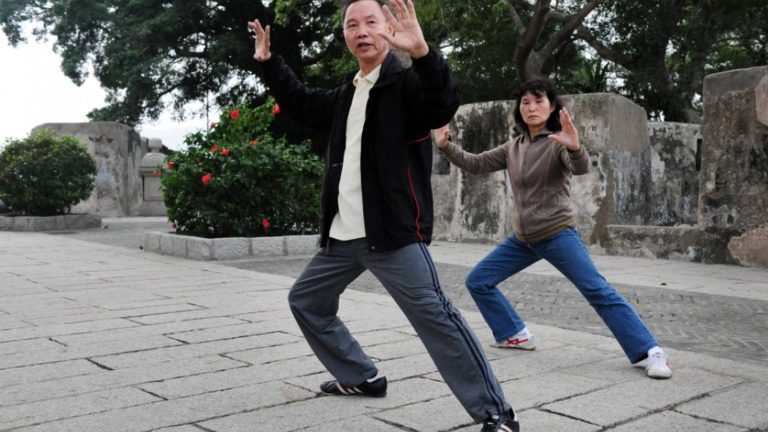
Tai Chi Chuan or any Tai Chi is a type of Kung Fu, so at some depth it’s a martial art, but it’s also more than that. It’s a healing art and a meditation in itself that can help one’s balance. It provides a tangible mind/body/spirit connection, as well as a deeper connection with one’s surroundings. It can do wonders for the ailed as well as athletes of all types. It’s also a folk dance (the only way I can fake the ability to dance is by repeating Tai Chi moves).
Tai Chi is a physical art that betters one’s well-being and it’s also a metaphysical art that provides a way to cultivate energy. Tai Chi is all about developing grounding and rooting. Since it is done standing and walking, the meditative nature of Tai Chi is highly applicable and transferable to the rest of our day as we walk and stand around others.
There are four main forms of Tai Chi: Chen, Sun, Yang, and Wu, and there are many different styles within each. No matter how different they are, each contains some of the same practices and entirely the same theories.
In Tai Chi, there is no one superior type of posturing, there are only more dedicated practitioners. The interesting thing about Tai Chi, as opposed to practically everything in the postmodern world, is as long as you keep in mind certain concepts you can’t do it wrong, you can only refine it. In this way, there is constant potential to learn more from the same movement.
In Tai Chi, a couple of movements are just variations of yoga’s warrior poses, only done with less of a deep stretch. And in the form I practice there are a couple of movements that involve brushing oneself, tapping certain body parts and even adding a moderate stomp. In Tai Chi, there is infinite variation and change is good.
Being flexible and accepting of new ways to do things and new forms to do is a big lesson. It’s said that in the long-form there is a variation of every movement possible and there is definitely a reflection of every martial art, healing and internal art.



